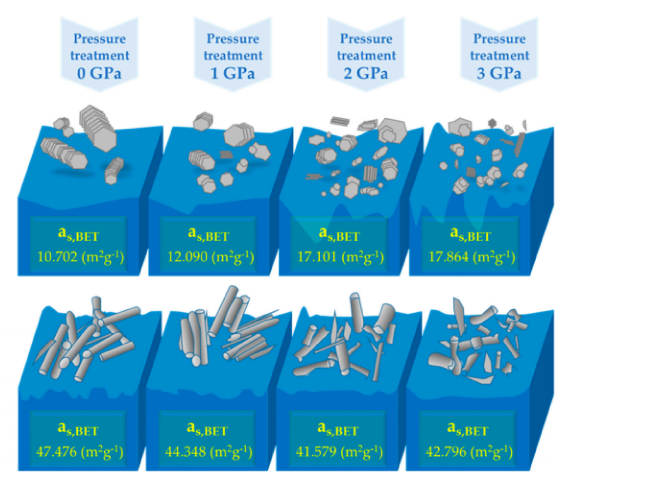“Effect of Pressure Treatment on the Specific Surface Area in Kaolin Group Minerals”
- Authors
S. Kwon, H. Hwang, Y. Lee*
- Journal
Crystals
Vol.9, pp.528, 2019.10 - DOI
Abstract
Pressure can tailor the properties of a material by changing its atomistic arrangements and/or crystal morphology. We have investigated the changes in the adsorption properties of kaolin group minerals as a function of pressure treatment in the gigapascal range. External pressures have been applied using a large volume press (LVP) to kaolinite (Al2Si2O5(OH)4) and halloysite (H4Al2O9Si2·2H2O), which represent natural 2D layered and 1D nanowire structures, respectively. Powdered samples have been compressed up to 3 GPa in 1 GPa steps at room temperature and recovered by up to ca. 0.35 g from each pressure step. Brunauer–Emmett–Teller (BET) measurements were conducted using N2 gas to measure the specific surface area, pore size distribution, and pore volume of the pressure-treated samples. As the treatment pressure increased, kaolinite showed an increase in the adsorption behavior from nonpores to mesopores, whereas halloysite responded in an opposite manner to show a decrease in its adsorption capability. We discuss the contrasting effects of pressure-treatment on the two morphologically distinct kaolin group minerals based on field-emission scanning electron microscope (FE-SEM) images measured on each recovered material. We observed that the layers in kaolinite separate into smaller units upon increasing pressure treatment, whereas the tubes in halloysite become flattened, which led to the contrasting changes in surface area. Further study is in progress to compare this effect to when water is used as the pressure-transmitting medium.












